Practical Aspects of Weight Measurement Using Image Processing Methods in Waterfowl Production
Abstract
1. Introduction
1.1. Main Characteristics of Precision Livestock Farming
1.2. Main Characteristics of Poultry and Foie Grass Sector
2. Materials and Methods
2.1. Animals
2.2. Housing and Management Conditions
2.3. Data Collection
2.4. Processing and Verifying Data
2.4.1. Development of Filter Modules and Detection of Repetitive Data
- -
- It was not sensitive to different resolution and aspect ratios;
- -
- Changing the contrast did not change the hash value, or changed it only slightly, so the hash values of very similar images would be closer to each other;
- -
- The method worked quickly.
2.4.2. Blurred Image Detection
- Sharp image 1141;
- Blurred scale 1063;
- Blurred image 26.
3. Results
4. Discussion
5. Conclusions
Author Contributions
Funding
Institutional Review Board Statement
Data Availability Statement
Acknowledgments
Conflicts of Interest
Abbreviations
| CPU | Central Processing Unit |
| DLC | DeepLabCut |
| DNN | Deep Neural Network |
| FCR | Feed Conversion Ratio |
| GPS | Global Positioning System |
| GPU | Graphics Processing Unit |
| IQR | Interquartile Range |
| MAE | Mean Absolute Error |
| ML | Machine Learning |
| MLP | Multilayer Perceptron |
| PLF | Precision Livestock Farming |
| PoE | Power Over Ethernet |
| R-CNN | Region-Based Convolutional Neural Networks |
| RGB | Red, Green, and Blue Colors |
| SDGs | Sustainable Development Goals |
| UTP | Unshielded Twisted Pair |
| YOLACT | You Only Look At CoefficienTs |
References
- Li, G.; Ji, B.; Li, B.; Shi, Z.; Zhao, Y.; Dou, Y.; Brocato, J. Assessment of layer pullet drinking behaviors under selectable light colors using convolutional neural network. Comput. Electron. Agric. 2020, 172, 105333. [Google Scholar] [CrossRef]
- Wolfert, S.; Isakhanyan, G. Sustainable agriculture by the Internet of Things—A practitioner’s approach to monitor sustainability progress. Comput. Electron. Agric. 2022, 200, 107226. [Google Scholar] [CrossRef]
- Kashiha, M.; Pluk, A.; Bahr, C.; Vranken, E.; Berckmans, D. Development of an early warning system for a broiler house using computer vision. Biosyst. Eng. 2013, 116, 36–45. [Google Scholar] [CrossRef]
- Alexy, M.; Haidegger, T. Precision Solutions in Livestock Farming—Feasibility and applicability of digital data collection. In Proceedings of the IEEE 10th Jubilee International Conference on Computational Cybernetics and Cyber-Medical Systems ICCC 2022 Budapest, Reykjavík, Iceland, 6–9 July 2022; Anikó, S., Ed.; IEEE Hungary Section: Budapest, Hungary, 2022; pp. 233–238. [Google Scholar]
- Li, G.; Huang, Y.; Chen, Z.; Chesser, G.D., Jr.; Purswell, J.L.; Linhoss, J.; Zhao, Y. Practices and Applications of Convolutional Neural Network-Based Computer Vision Systems in Animal Farming: A Review. Sensors 2021, 21, 1492. [Google Scholar] [CrossRef]
- Okinda, C.; Nyalala, I.; Korohou, T.; Okinda, C.; Wang, J.; Achieng, T.; Wamalwa, P.; Mang, T.; Shen, M. A review on computer vision systems in monitoring of poultry: A welfare perspective. Artif. Intell. Agric. 2020, 4, 184–208. [Google Scholar] [CrossRef]
- Available online: https://www.eurofoiegras.com/ (accessed on 12 September 2022).
- Lourens, A.; Heerkens, J.L.T.; Star, L. Sensors and techniques to monitor and improve welfare and performance in poultry chains. In Precision Technology and SENSOR Applications for Livestock Farming and Companion Animals; van Erpvan der Kooij, E., Ed.; Academic Publishers: Wageningen, The Netherlands, 2021; pp. 131–165. ISBN 978-90-8686-364-8. [Google Scholar]
- Mollah, B.R.; Hasan, A.; Salam, A.; Ali, A. Digital image analysis to estimate the live weight of broiler. Comput. Electron. Agric. 2010, 72, 48–52. [Google Scholar] [CrossRef]
- Newberry, R.C.; Hunt, J.R.; Gardiner, E.E. Behaviour of roaster chickens towards an automatic weighing perch. Br. Poult. Sci. 1985, 26, 229–237. [Google Scholar] [CrossRef]
- Doyle, I.; Leeson, S. Automatic Weighing of Poultry Reared on a Litter Floor. Can. J. Anim. Sci. 1989, 69, 1075–1081. [Google Scholar] [CrossRef]
- Feighner, S.D.; Godowski, E.F.; Miller, B.M. Portable Microcomputer-Based Weighing System: Applications in Poultry Sciences. Poult. Sci. 1986, 65, 868–873. [Google Scholar] [CrossRef]
- Fontana, I.; Tullo, E.; Butterworth, A.; Guarino, M. Broiler vocalisation analysis used to predict growth. In Proceedings of the Measuring Behavior 2014; Spink, A.J., Loijens, L.W.S., Woloszynowska-Fraser, M., Noldus, L.P.J.J., Eds.; Academic Publishers: Wageningen, The Netherlands, 2014. [Google Scholar]
- Fontana, I.; Tullo, E.; Butterworth, A.; Guarino, M. An innovative approach to predict the growth in intensive poultry farming. Comput. Electron. Agric. 2015, 119, 178–183. [Google Scholar] [CrossRef]
- Russell, B.C.; Torralba, A.; Murphy, K.P.; Freeman, W.T. LabelMe: A Database and Web-Based Tool for Image Annotation. Int. J. Comput. Vis. 2007, 77, 157–173. [Google Scholar] [CrossRef]
- Bolya, D.; Zhou, C.; Xiao, F.; Lee, Y.J. YOLACT: Real-Time Instance Segmentation. arXiv 2019, arXiv:1904.02689. [Google Scholar]
- He, K.; Gkioxari, G.; Dollár, P.; Girshick, R. Mask R-CNN. In Proceedings of the 2017 IEEE International Conference on Computer Vision (ICCV), Venice, Italy, 22–29 October 2017; pp. 2961–2969. [Google Scholar] [CrossRef]
- Mathis, A.; Mamidanna, P.; Abe, T.; Cury, K.M.; Murthy, V.N.; Mathis, M.W.; Bethge, M. Markerless tracking of user-defined features with deep learning. arXiv 2018, arXiv:1804.03142. [Google Scholar] [CrossRef]
- Guo, Y.; Chai, L.; Aggrey, S.E.; Oladeinde, A.; Johnson, J.; Zock, G. A Machine Vision-Based Method for Monitoring Broiler Chicken Floor Distribution. Sensors 2020, 20, 3179. [Google Scholar] [CrossRef] [PubMed]
- Fang, C.; Zheng, H.; Yang, J.; Deng, H.; Zhang, T. Study on Poultry Pose Estimation Based on Multi-Parts Detection. Animals 2022, 12, 1322. [Google Scholar] [CrossRef]
- Fang, C.; Zhang, T.; Zheng, H.; Huang, J.; Cuan, K. Pose estimation and behavior classification of broiler chickens based on deep neural networks. Comput. Electron. Agric. 2020, 180, 105863. [Google Scholar] [CrossRef]
- Dawkins, M.S.; Cain, R.; Merelie, K.; Roberts, S.J. In search of the behavioural correlates of optical flow patterns in the automated assessment of broiler chicken welfare. Appl. Anim. Behav. Sci. 2013, 145, 44–50. [Google Scholar] [CrossRef]
- Pereira, D.F.; Miyamoto, B.C.B.; Maia, D.D.N.; Tatiana Sales, G.; Magalhaes, M.M.; Gates, R.S. Machine vision to identify broiler breeder behaviour. Comput. Electron. Agric. 2013, 99, 194–199. [Google Scholar] [CrossRef]
- Mehdizadeh, S.A.; Neves, D.; Tscharke, M.; Nääs, I.; Banhazi, T. Image analysis method to evaluate beak and head motion of broiler chickens during feeding. Comput. Electron. Agric. 2015, 114, 88–95. [Google Scholar] [CrossRef]
- Aydin, A. Development of an early detection system for lameness of broilers using computer vision. Comput. Electron. Agric. 2017, 136, 140–146. [Google Scholar] [CrossRef]
- Cao, L.; Xiao, Z.; Liao, X.; Yao, Y.; Wu, K.; Mu, J.; Li, J.; Pu, H. Automated Chicken Counting in Surveillance Camera Environments Based on the Point Supervision Algorithm: LC-DenseFCN. Agriculture 2021, 11, 493. [Google Scholar] [CrossRef]
- Schlageter-Tello, A.; Bokkers, E.; Koerkamp, P.G.; Van Hertem, T.; Viazzi, S.; Romanini, C.; Halachmi, I.; Bahr, C.; Berckmans, D.; Lokhorst, K. Comparison of locomotion scoring for dairy cows by experienced and inexperienced raters using live or video observation methods. Anim. Welf. 2015, 24, 69–79. [Google Scholar] [CrossRef]
- Van Hertem, T.; Viazzi, S.; Steensels, M.; Maltz, E.; Antler, A.; Alchanatis, V.; Schlageter-Tello, A.A.; Lokhorst, K.; Romanini, E.C.; Bahr, C.; et al. Automatic lameness detection based on consecutive 3D-video recordings. Biosyst. Eng. 2014, 119, 108–116. [Google Scholar] [CrossRef]
- Amraei, S.; Mehdizadeh, S.A.; Sallary, S. Application of computer vision and support vector regression for weight prediction of live broiler chicken. Eng. Agric. Environ. Food 2017, 10, 266–271. [Google Scholar] [CrossRef]
- Mortensen, A.K.; Lisouski, P.; Ahrendt, P. Weight prediction of broiler chickens using 3D computer vision. Comput. Electron. Agric. 2016, 123, 319–326. [Google Scholar] [CrossRef]
- Balogh, Z.; Magdin, M.; Molnár, G. Motion Detection and Face Recognition using Raspberry Pi, as a Part of, the Internet of Things. Acta Polytech. Hung. 2019, 16, 167–185. [Google Scholar]
- Khamis, A.; Meng, J.; Wang, J.; Azar, A.T.; Prestes, E.; Takács, Á.; Rudas, I.J.; Haidegger, T. Robotics and intelligent systems against a pandemic. Acta Polytech. Hung. 2021, 18, 13–35. [Google Scholar] [CrossRef]

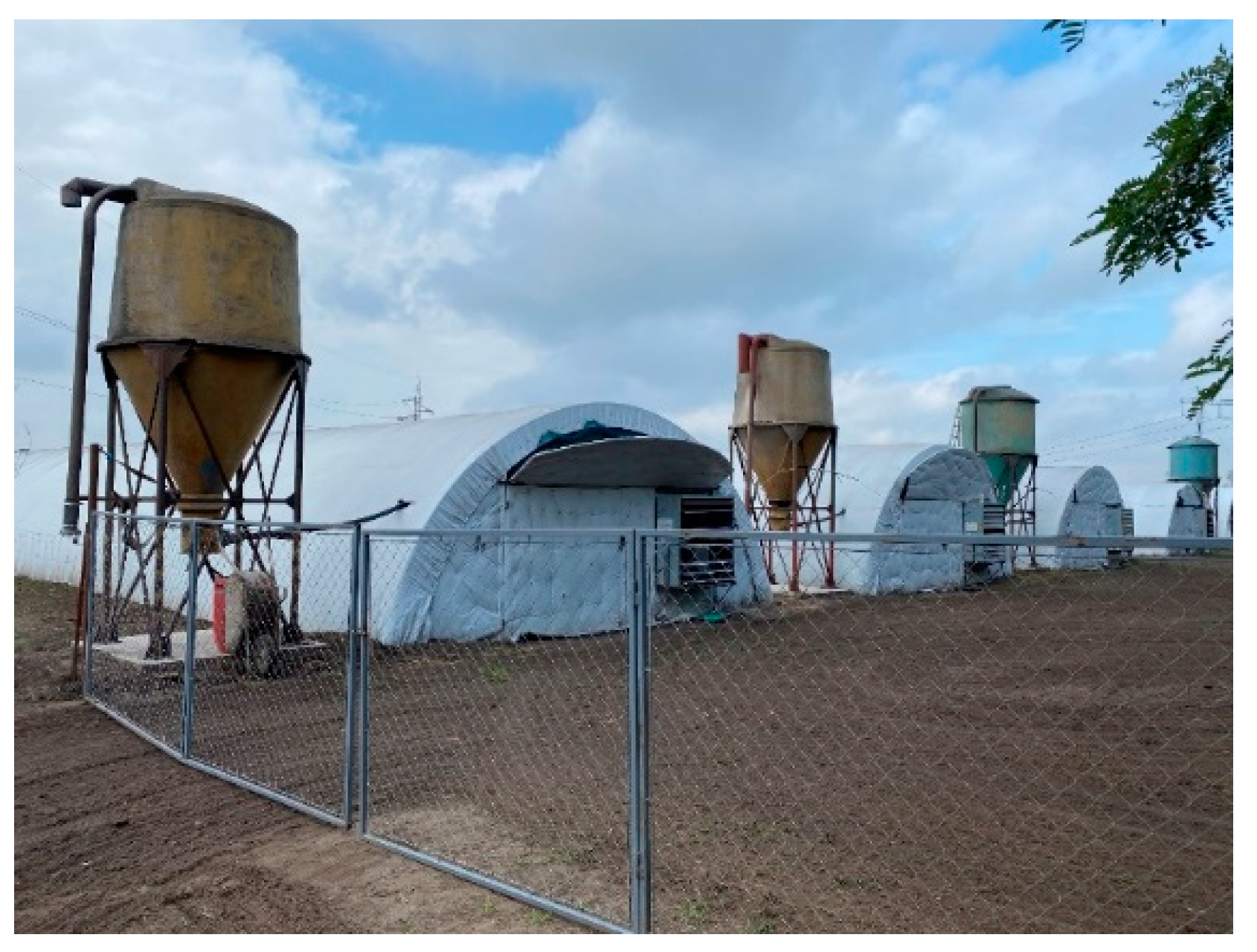
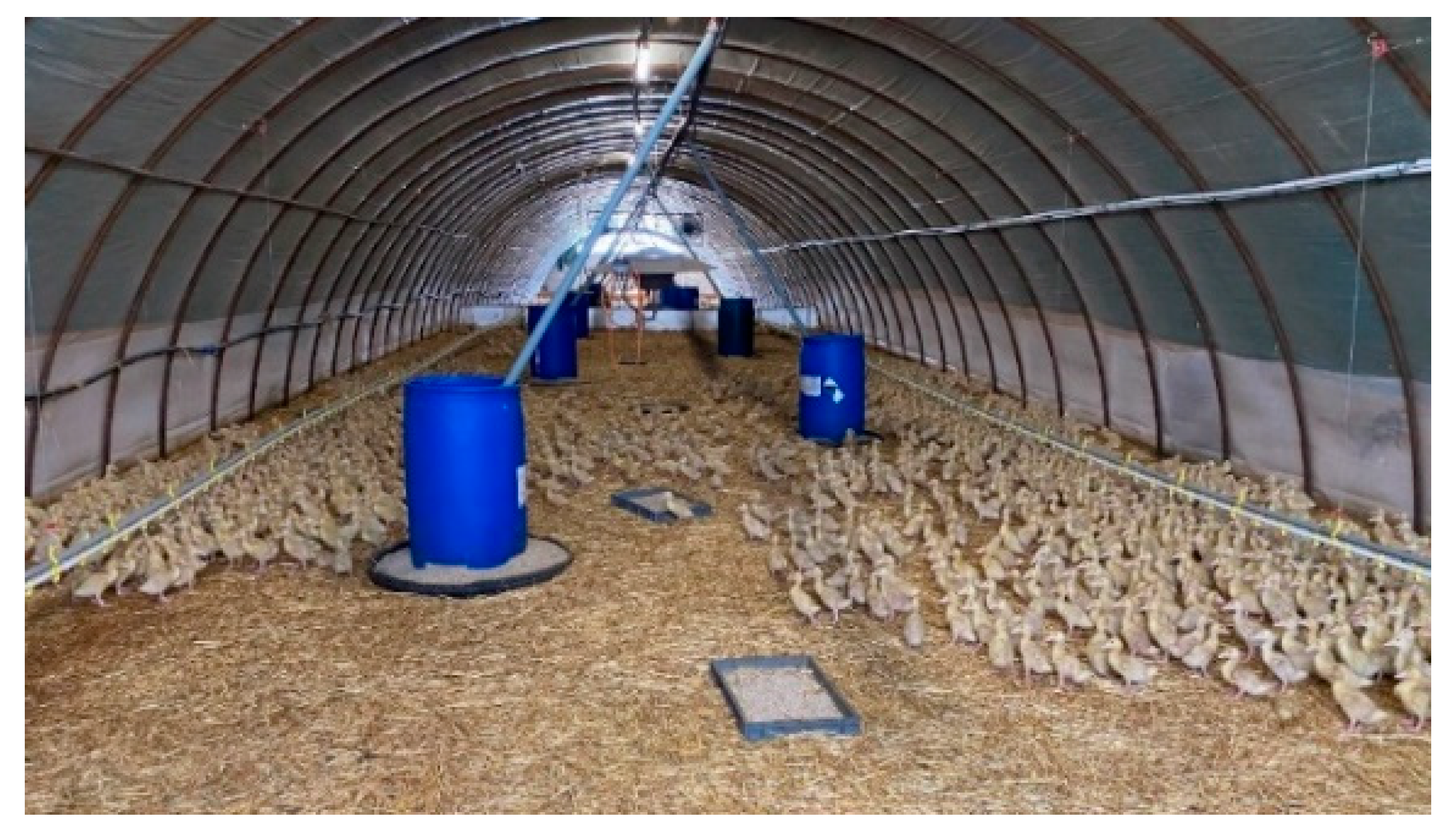

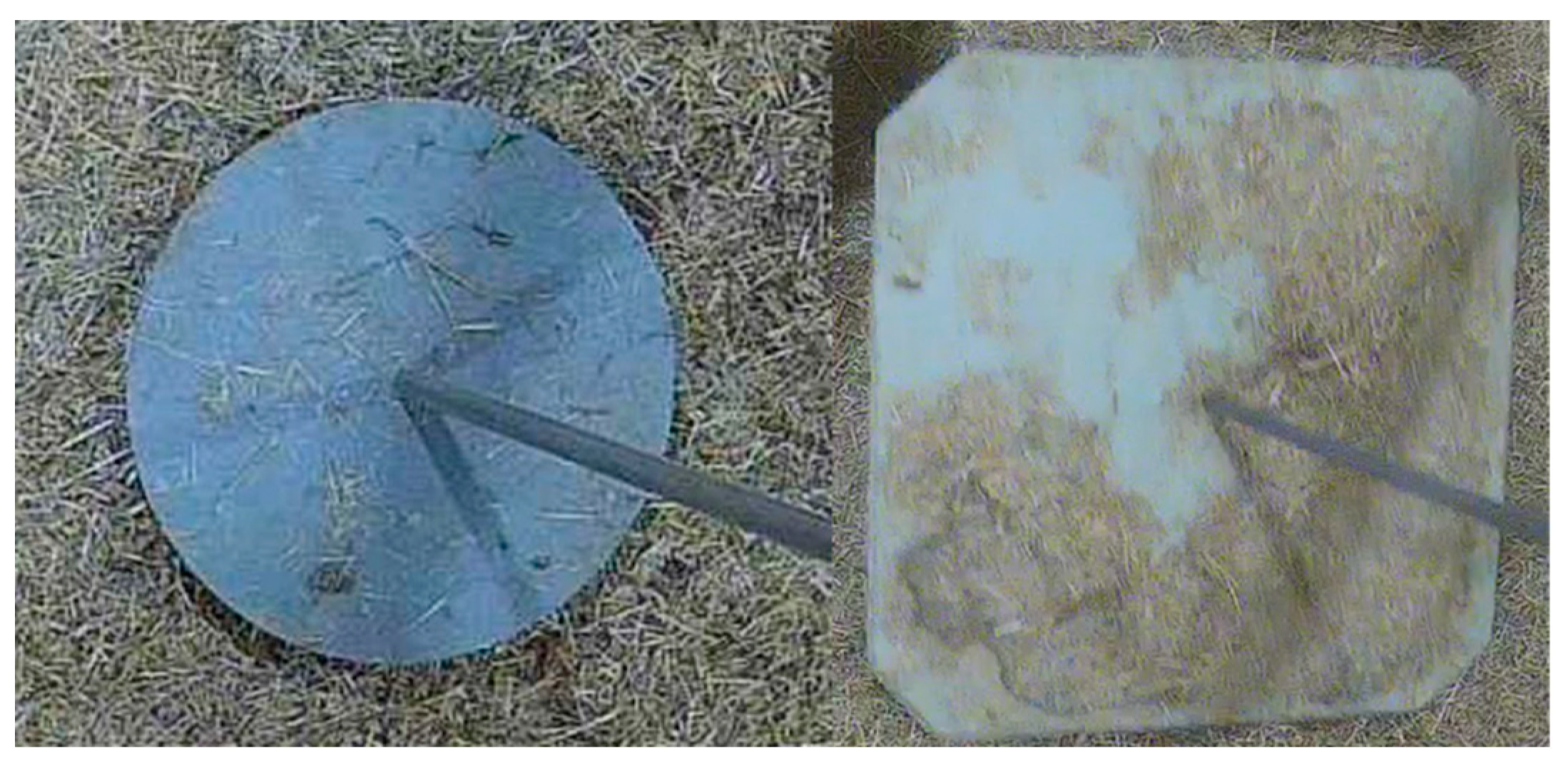
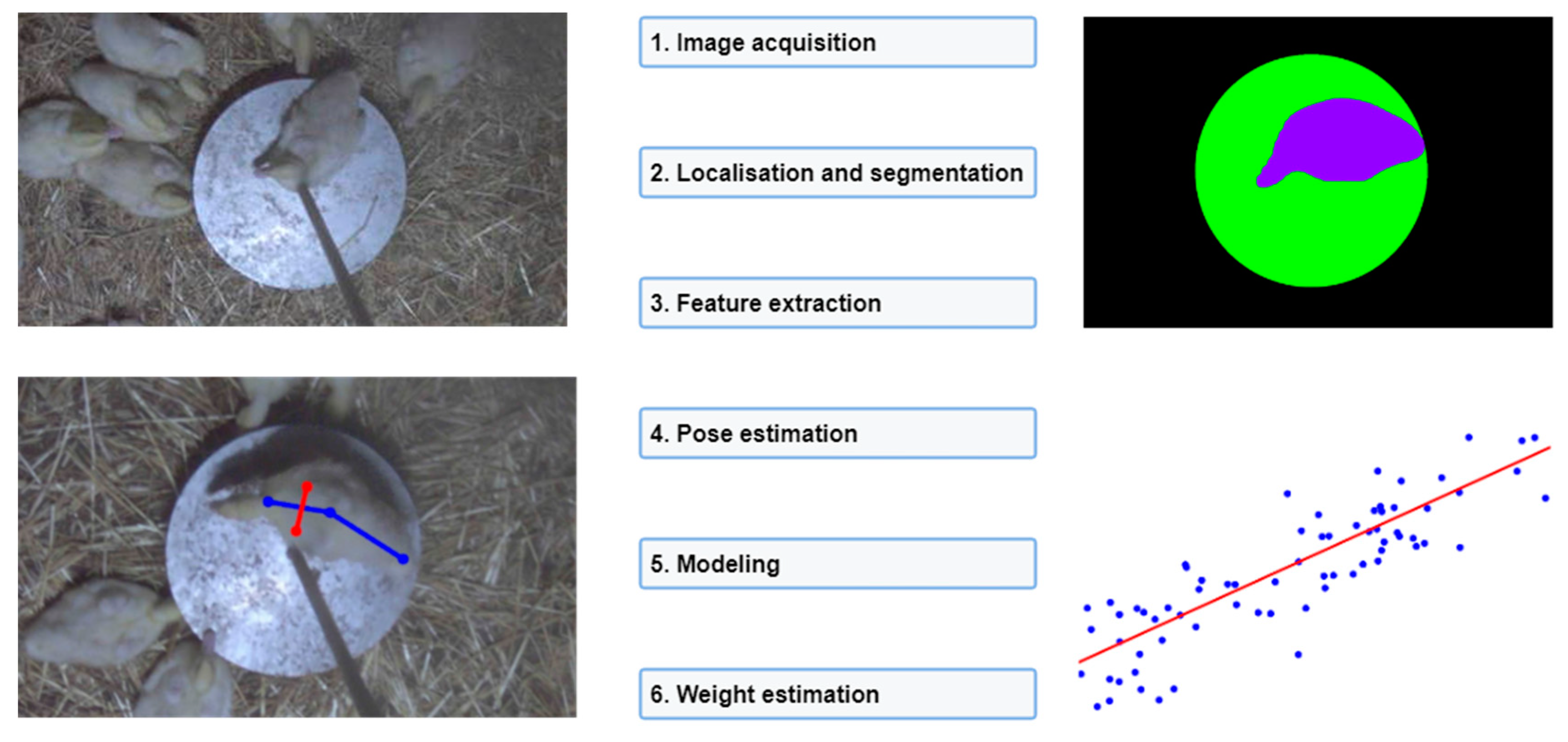
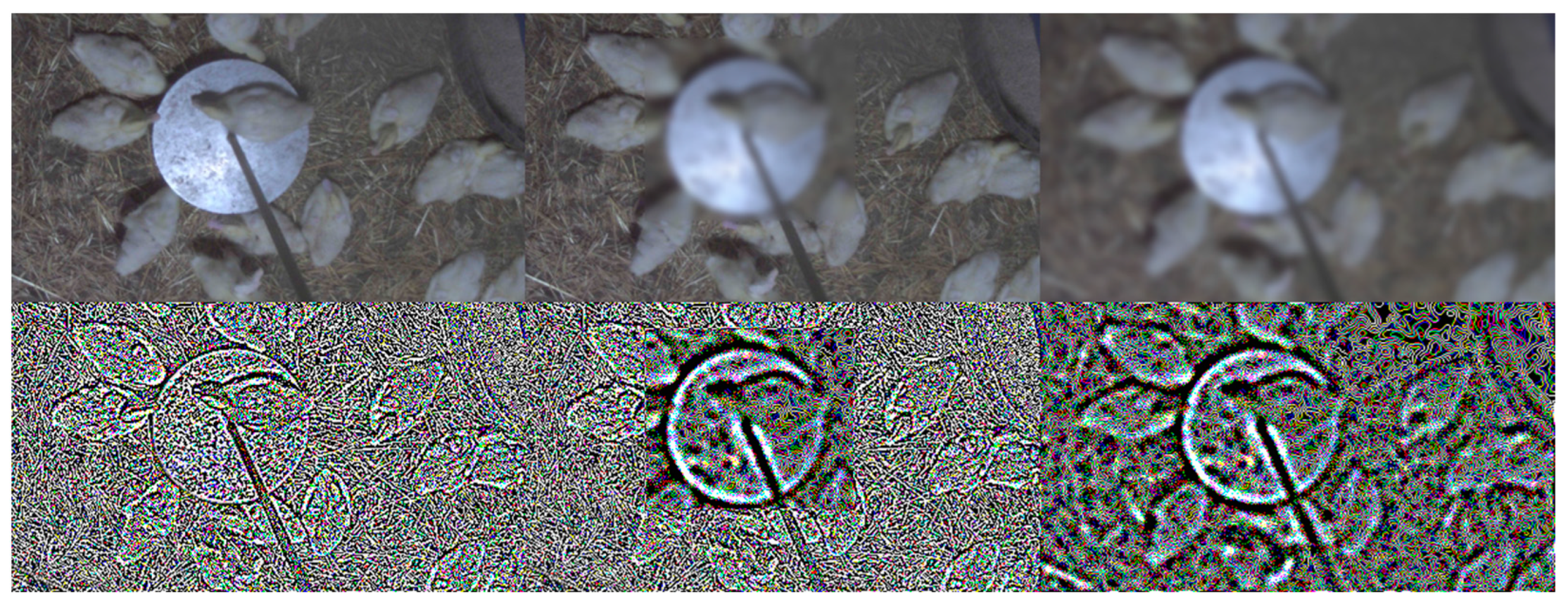
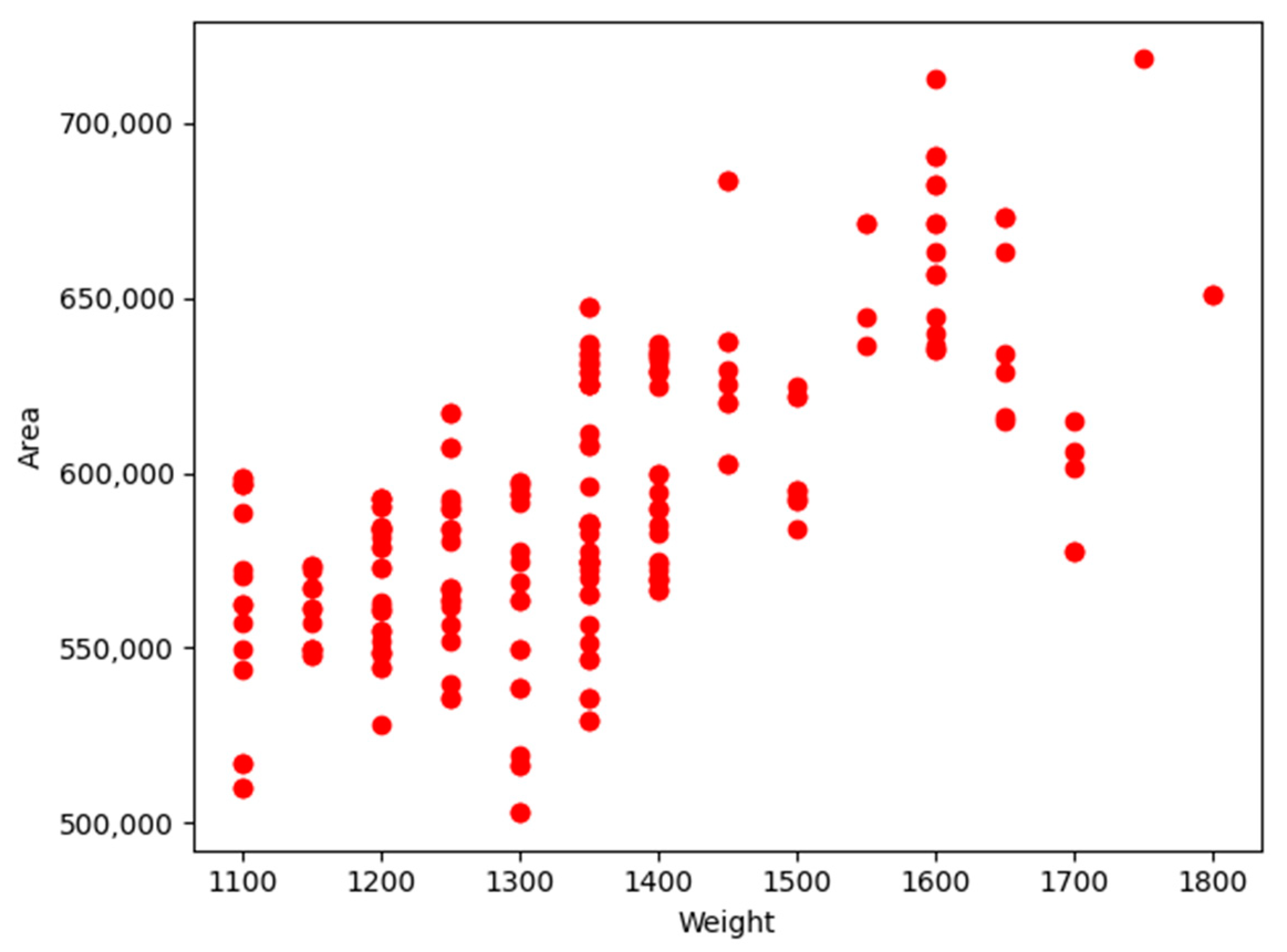
| IQR 0 Filter | Linear Regression | Random Forest | MLP |
|---|---|---|---|
| Ellipse | 79.1 | 76.4 | |
| Area | 77.6 | 64 | |
| Area and Ellipse | 77.6 | 86.76 | 143.6 |
| IQR 0.2 Filter | Linear Regression | Random Forest | MLP |
| Ellipse | 110.97 | 97.77 | |
| Area | 110.6 | 105 | |
| Area and Ellipse | 110.47 | 78.88 | 114 |
Publisher’s Note: MDPI stays neutral with regard to jurisdictional claims in published maps and institutional affiliations. |
© 2022 by the authors. Licensee MDPI, Basel, Switzerland. This article is an open access article distributed under the terms and conditions of the Creative Commons Attribution (CC BY) license (https://creativecommons.org/licenses/by/4.0/).
Share and Cite
Szabo, S.; Alexy, M. Practical Aspects of Weight Measurement Using Image Processing Methods in Waterfowl Production. Agriculture 2022, 12, 1869. https://doi.org/10.3390/agriculture12111869
Szabo S, Alexy M. Practical Aspects of Weight Measurement Using Image Processing Methods in Waterfowl Production. Agriculture. 2022; 12(11):1869. https://doi.org/10.3390/agriculture12111869
Chicago/Turabian StyleSzabo, Sandor, and Marta Alexy. 2022. "Practical Aspects of Weight Measurement Using Image Processing Methods in Waterfowl Production" Agriculture 12, no. 11: 1869. https://doi.org/10.3390/agriculture12111869
APA StyleSzabo, S., & Alexy, M. (2022). Practical Aspects of Weight Measurement Using Image Processing Methods in Waterfowl Production. Agriculture, 12(11), 1869. https://doi.org/10.3390/agriculture12111869





